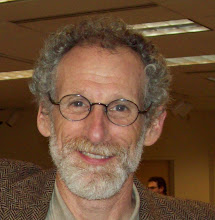I was fortunate enough to interview and learn from the experience of Mrs. B. She has been teaching for thirty years in a variety of forums. Mrs. B began her teaching career at a high-income school for fifteen years. She then moved to this area where she taught for ten years, two of which were in a bilingual program. Her final five years up to the present have been taught in in her present school, in grades three and four. Mrs. B also took a break from traditional teaching for an additional four years to do home instruction. The students she aided ranged from first to twelfth grade.
The school she is working in currently is located in a mostly low-income community on the central coast of California. The school has roughly 435 students who are predominantly Latino. Mrs. B is presently teaching third graders. Her class has twenty-three students, fourteen boys and nine girls. There are twenty-one students of Latino descent and two African America students. Twenty of Mrs. B's students are English Language Learners.
We began by discussing Mrs. B's educational philosophy. She expressed a belief that public education was meant to impart quality education to all. "Every child can learn." she believes, and it is our job to reach each and every one of them. In describing her pedagogy, she mentions "equal opportunity." She emphasized the vitality of tailoring the lessons for the students. It is in this way that teachers can ensure all students get reached, regardless of socio-economic status or background. These are virtues that I not only admire, but strive for. Even after thirty years of teaching, most of which have been under standardized based instruction, Mrs. B does not overlook the true value of what educators are doing. Teachers are incapable of doing their jobs if they do not primarily believe each one of their students not only can learn, but have the right to do so. These principles have created the basis for Mrs. B's quality teaching, a model that I hope to mirror.
In setting up her classroom, she has placed the students in tables of about four students to promote group discussions. She ensures that the tables are angled so that the students are able to view her, wherever she may be within the classroom. Mrs. B seats lower scoring students next to higher scoring students, allowing the children the opportunity to learn from each other. The bulletin boards located throughout the room reflect what the students are working on for the particular week. Mrs. B's strategy for designing her classroom is informative. She allows interactive group work by having the students in tables based on skill level. However, to maintain management, she ensures the tables are angled so that the primary attention is on her. The bulletin boards attend to those students who are more visual learners. Mrs. B has struck a challenging balance. She allows the students to be more interactive with each other; however she is always able to maintain control of her class.
One of the more vital points discussed was the necessity to meet the needs of all learners, even in these times of more standardized instruction. Mrs. B angrily admits that the majority of her daily instructions entail teaching to some sort of test. She describes the heavily weighted emphasis on math and language arts, leaving little room for social studies and science. "They're lucky if they get to any form of art or physical education," she explains, "I do not get to decide what I teach anymore." However, she does understand her role for delivering quality education to all types of learners. Whenever possible, Mrs. B makes her instruction more physical and hands-on. She allows the students to use manipulates during math and has them write their answers on their own individual white boards. She uses pictures for vocabulary and has the students get up and act scenarios out for language arts. Mrs. B demonstrates a teacher's ability to be creative and a curriculum that calls for very little creativity.
We concluded the interview by discussing how, during these seemingly frustrating times for teachers, she is able to maintain her optimism. I asked her what keeps her enthusiastic. Mrs. B described the look children possess when they finally get something. "You can literally see the light bulb come on," she describes. Mrs. B enjoys grappling over a concept with a student stating "It makes the end result more rewarding." These are the untainted basics of education that Mrs. B has not lost. She instills knowledge that helps children grow into adulthood and encourages lifelong learning.
This interview taught me about the importance of reaching all varieties of diverse learners, and the ways in which this can be achieved. Mrs. B demonstrates the ways in which she tailors her strict curriculum to accommodate her students. She allows for visual learning and group discussions. The children are often times given the opportunity to get out of their seats. I learned the ways in which I am able to implement my own level of creativity within my classroom. Most importantly, however, this interview reminded me of why I decided to enter the field of education in the first place. When asked what maintains her level of enthusiasm, Mrs. B stated "watching the kids learn." This simple answer instilled exactly what it is I am doing as a teacher. I am fortunate enough to contribute to the growth of children into who they want to become. This is what keeps Mrs. B coming back to school every morning, and what I have to look forward to.
Subscribe to:
Post Comments (Atom)




No comments:
Post a Comment